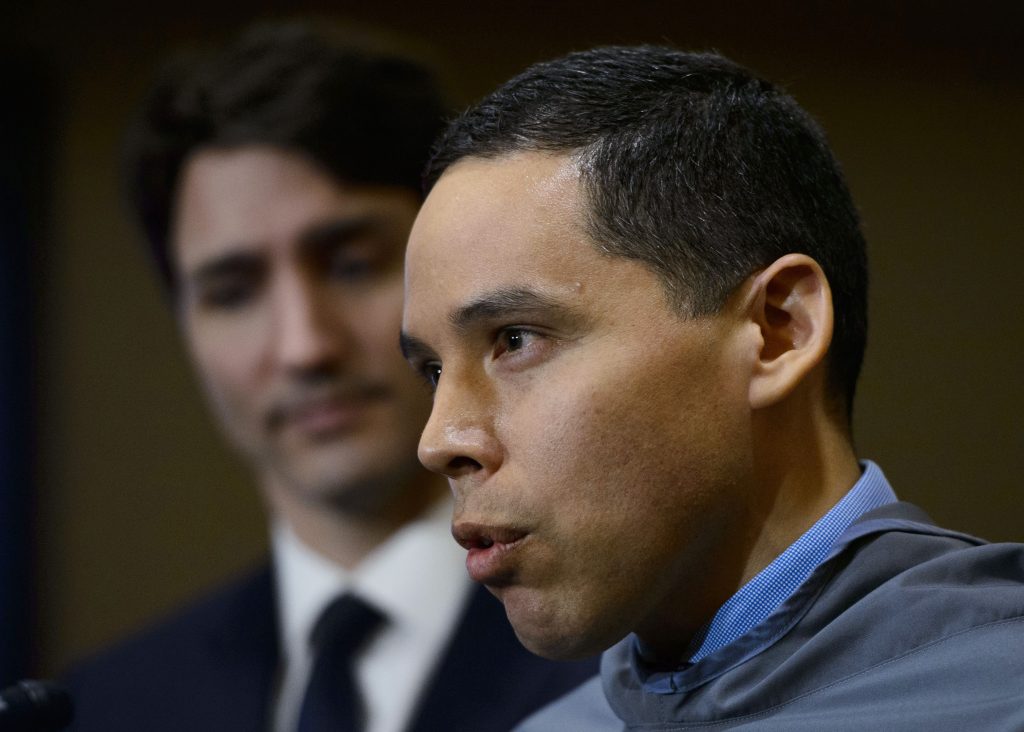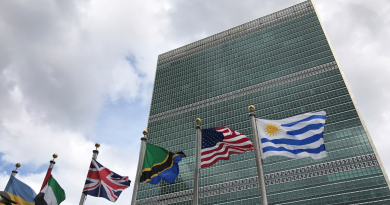Canadian budget fell short on infrastructure, Indigenous leaders say

Some say up to $30B is needed to close infrastructure gap in First Nations alone
National Indigenous leaders say the federal budget doesn’t do enough to fulfil the government’s 2030 promise to close infrastructure gaps in their communities.
The budget proposes to spend more than $18 billion over the next five years to improve quality of life for First Nations, Inuit and Métis people.
It promises $6 billion to fix everything from homes to roads, but national Indigenous leaders say it’s still not enough to address essential needs.
“That falls a bit short,” said Assembly of First Nations National Chief Perry Bellegarde in an interview with CBC News.
“The dollars that have been identified are moving in the right direction, but infrastructure is a huge, huge need on reserves, from housing to adequate water and sewage systems to infrastructure, from community buildings to roads and bridges.”
Bellegarde said the federal government needs to commit to sustained funding over the next five to 15 years to bring infrastructure in Indigenous communities up to the same level as the rest of Canada.
Indigenous leaders say they doubt the government’s 2030 target is attainable without more funding to address the decades of neglect that have created a wide chasm in living standards between many Indigenous communities and the rest of Canada.
Canada ranked 12th internationally in the 2016 United National Human Development Index, but the on-reserve population ranked 78th.
Some estimates suggest up to $30 billion is needed to deal with infrastructure gap in First Nations alone.
$6B meant for the short term: Miller
Indigenous Services Minister Marc Miller said he knows the budget’s dollar figures are not enough, but the promised funding is meant as short-term stimulus to get “shovel-ready projects” going over the next three to five years.
Miller said the federal government is still trying to work out how much money it needs to reach its 2030 goal.
“We are still resolved in closing it, but we have to continue to measure it,” Miller told CBC News.
“That involves a process that involves every single community out there, to establish what their infrastructure plans are and what the money is.”
Miller said the $18 billion pledge in the budget is still a history-making amount.
“That’s what any government should be doing, regardless of their stripes … working relentlessly to close those gaps that are unacceptable in a country such as Canada,” Miller said.
The government is earmarking $4.3 billion over four years for immediate infrastructure needs in Indigenous communities, and $1.7 billion over five years, with $388.9 million in the years following, to cover ongoing operations and maintenance of infrastructure on-reserve.
‘Just a matter of time before there are tragedies’
In Inuit Nunangat, the homeland of the Inuit in Canada, the infrastructure gap is so great that communities are looking for basic essentials.
“We are always at risk of scenarios in which Inuit in need of medical care cannot get it because of a lack of infrastructure. And that really is a fear that we live with every day,” said Natan Obed, president of the Inuit Tapiriit Kanatami, the national representational organization for Inuit.
“Unfortunately, it is really just a matter of time before there are tragedies that happen that will be national stories that are almost exclusively based on the lack of infrastructure in Inuit Nunangat communities.”
Half of all homes in Inuit Nunangat are overcrowded, said Obed.
He said five of the 51 communities in Inuit Nunangat have only seasonal marine service and just two are accessible by an all-weather road.
That means most communities rely on air travel, he said, and the Second World War-era airstrips in the region are in desperate need of upgrades. Obed said some don’t even have lights.
“I would hope people would appreciate that we’re not asking for the fanciest, new version of infrastructure,” Obed said.
“In many cases, we’re asking for an initial investment, really the completion of building Canada’s infrastructure.”
Inuit Nunangat is also facing another threat: it’s on the front line of climate change. A great deal of the infrastructure is in danger of coastal erosion and rising seas. There are also major concerns about thawing permafrost and the ability of Inuit communities to use their endangered infrastructure in the future.
“There needs to be some urgency, I think, in trying to figure out how to solve this particular challenge,” Obed said.
“We [ITK and federal government] have had constructive conversations all the way through, but I can unequivocally say that the investments are not matching the need.”
Other money promised for mental health, pandemic support, child care
Along with infrastructure, the budget offers $597.6 million over three years for a First Nations, Inuit and Métis Nation mental health and wellness strategy.
The money allocated for mental health is less than half of what the Assembly of First Nations requested. But Vice Chief David Pratt of the Federation of Sovereign Indigenous Nations in Saskatchewan said he’s still hoping the funding will help save lives.
“It’s going to expand community-based supports and capacity,” Pratt said. “We think that’s key.”
The money would renew funding for the Indian Residential Schools Health Supports Program and Crisis Line, which provides support for survivors of residential schools, and expand community-based support.
The budget also pledges an additional $1.2 billion to respond to COVID-19 in Indigenous communities. Some of the money will go to buying personal protective equipment and isolation units and hiring nurses.
The budget also earmarks $2.2 billion to address the crisis of missing and murdered Indigenous women and girls.
It also allocates $2.5 billion over five years for Indigenous early learning and child care, in tandem with the government’s promise to bring $10 per day daycare to the provinces and territories.
The plan includes $515 million for on-reserve before- and after-school care, plus additional support for First Nation, Inuit and Métis programming.
“That’s going to be really big for our families and our women who want to go back to work, back to school,” said Vice President David Chartrand of the Métis National Council.
Métis Nation pushes for federal health coverage
Chartrand said he was pleased to see the Métis mentioned more than a dozen times in the budget, but was disappointed that they were left out of the budget’s health spending.
The budget proposes $1.4 billion over five years, and $40.6 million per year in the years following, for First Nation and Inuit health care services, including money to ensure access to clean water and manage the health impacts of climate change.
Métis can access provincial health services, but Chartrand said it’s not easy for them to do that because those services are usually far away from Métis villages, which lack health services of their own.
“If you can’t get there, you can’t get it,” Chartrand said.
“The Métis Nation has been truly abandoned. It’s truly a racial, discriminatory policy, if you ask me.”
Chartrand said he hopes new Indigenous health legislation the government is co-developing with First Nations, Inuit and Métis — which will give greater control over health services to Indigenous communities — will help solve the problem.
“It will be a big change-maker for the Métis people,” Chartrand said. “But right now, we’re left to fend for ourselves.”
Related stories from around the North:
Canada: Health, climate among northern highlights from Canadian budget, CBC News
Finland: Finnish Defence Minister tells party leaders shrinking fighter fleet would be “irresponsible”, Yle News
Greenland: Political upheaval in Greenland — What does Inuit Ataqatigiit do now?, Eye on the Arctic
Iceland: Iceland talks Arctic, Trump’s ditching of climate accord, with U.S. Secretary of State, Eye on the Arctic
Norway: Norway strengthens its Arctic military in new defense plan as security concerns grow in the region, The Independent Barents Observer
Russia: Putin speech takes on social issues, crisis with the West and grand plans for Arctic infrastructure, The Independent Barents Observer
Sweden: Arctic Sweden to welcome thousands of international troops for Northern Wind exercise, The Independent Barents Observer
United States: U.S. Navy to build airport infrastructure in North Norway to meet upped Russian submarine presence, The Independent Barents Observer



